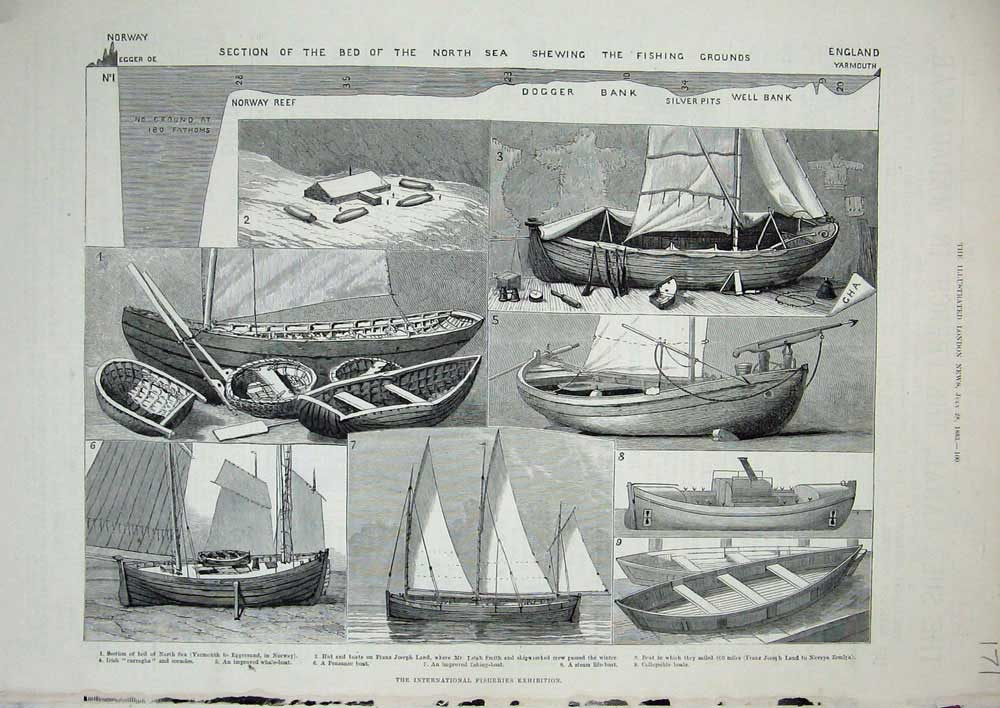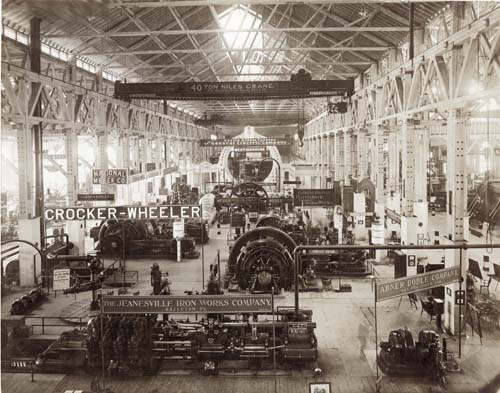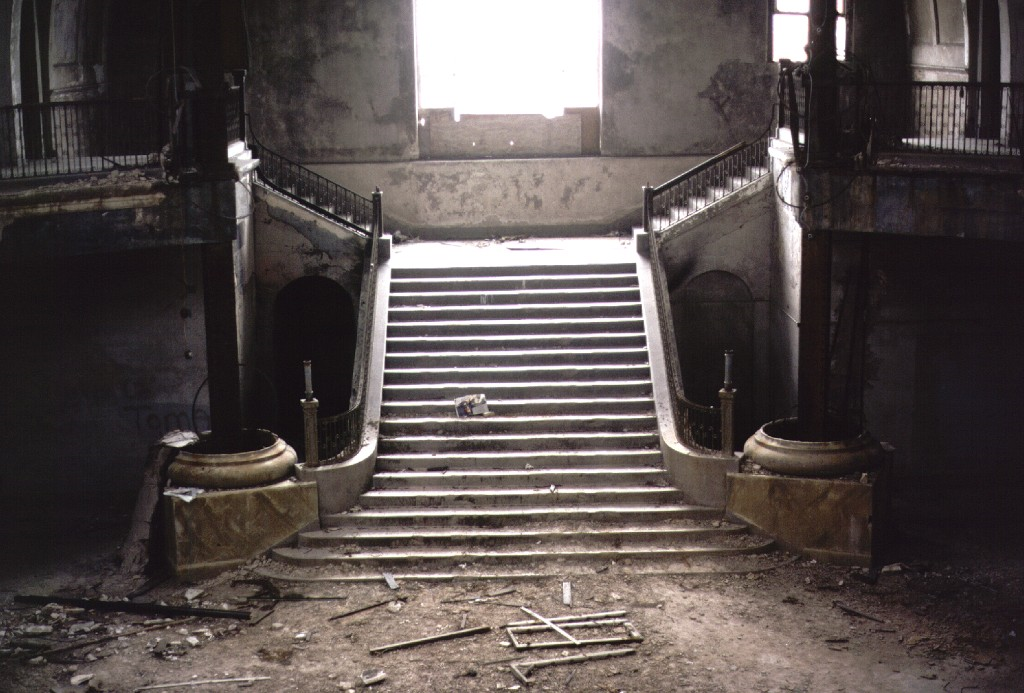Introduction: The Origins of the New Ideas
Like any other subject or concept, esthetics is subject to changes, the esthetics of architecture as well. No matter how close two styles can come, there will always be some distance between them, the line marked by the new ideas and the new vision of the world. In spite of the fact that art is considered a phenomenon that lies beyond time frame and transient fashion tastes, it does reprint reality and social events, which the change in the architecture style after a number of world fairs in XIX-XX centuries signifies.
To evaluate the significance of the change in the architecture style which same to reign after the world fairs in XIX-XX centuries, one has to take account of the social events which took place in the world. Due to the galloping speed of the industrialization process, the new vision of architecture has been shaped, which resulted in the change of artistic style. Though social life is often considered completely detached from the artistic world, this was the case when social revolution shifted the concept of art as well. As Auerbach emphasized, depicting the world fair in Ireland,
However, the meaning of linen and lace, the two textile forms that I shall focus upon here, were not found in their [linen] decoration, but in their economic properties – that is, they were reviewed and discussed as industrial rather than aesthetic objects.1
It is obvious that world fairs made the transition from one artistic or social idea to another smoother and more swift. Broadening the horizons of people’s frames of mind, World Fairs made it possible to evaluate the progress of the mankind and introduce new ideas to the entire world. To be more metaphoric, world fairs were the matter which brought the entire world together when there was no other means of communication available.
Therefore, it was obvious that the new vision of art which industrialization triggered concerned the economical value of an object, not its aesthetics. This meant that the new epoch was heralded. The art took another shape, peculiar and rather weird.
On a Journey to the Brave New World: First Ideas
Because of the long-lasting tradition, the architectural principles, which reigned before intuitionalism, took certain shape, could be called rather classical, with the “natural emphasis” which was inherited from the Greek and Roman standards. Due to the reign of the classical style in architecture, innovations were rather rare occasions in XVIII century art. As Pohl explained,
The Adam brothers rejected contrived and strict rules in favour of basic aesthetic principles which ‘naturalize’ architecture within a picturesque whole. The inspiration came from Greek and Roman architecture. […] However, the naturalization of architecture within its principles of the picturesque does not imply a ‘democratization’ of architecture.2
The ancient canons of architecture which were obviously out-of-date, bearing precious yet old concepts of architecture needed reconsideration badly. Owing to the old principles of constructing, art came to a complete standstill. It was evident that any changes were strongly required; otherwise, art would stick in the mess of the obsolete ideas.
However, the early attempts to create a new structure of society with a different value system and emphasize the necessity to develop industry emerged several times even at the very beginning of XIX century. It cannot be denied that the world fairs which have been taking place since the middle of XVIII century have influenced the world architecture greatly, contributing to the artistic interpretation of the social changes which took place in the world.
France appeared to be the country which first introduced the idea of industrial architecture and the industrial art in general to the public, which is not quite surprising – France ahs always been known for its liberal and socialistic ideas, “liberty, fraternity and equality” principles. Therefore, the exhibition which was arranged at the world fair in 1844, at the French Industrial Exposition, was the sign of the changes coming up quickly. Due to the ideas that had been brewing here for quite long, industrialization finally entered people’s lives through the sphere of art.
Among the first exhibitions which made the entire world talk about the new trends in architecture was the Great Exhibition in London, also known as the Crystal Palace Exhibition. Without this event, the world would have never known about the way architecture could be interpreted from the position of industrialism. Featuring the new architecture style called crystal architecture, the organizers of the exhibition shaped the idea of industrialism which had already been introduced to the world by French artists.
The particular style of architecture called crystal architecture was new to historians, and the magnificent specimen in Hyde Park would, no doubt, be spoken of… as one of the great features of the age… to be ranked with railways, the penny postage and other inventions.3
It must be admitted that the new art style caused great stir in the society, drawing much attention to industrialism, which met the aims of artists fully. With help of crystal architecture the ideas of industrialism could be conveyed better, since the glass and metal embodied what Mallgrave further on called “industrialism versus piety”4, a protest against the technological ignorance.

However, a single exhibition was not enough for the new concept of art to spread wider, which the adepts of industrialism in architecture understood perfectly well. As a result, a number of other exhibitions, which featured the ideas of industrialism and exposed its specimen in all their grace, followed. With help of the new concept of art, people finally combined aesthetics together with comfort – not quite successfully for aesthetics, thought. Due to the changes in the architectural concept, people had to adjust to the new style, which the further exhibitions encouraged.

Shaping the New Concepts: Evolution
Though it might seem that the new idea of architecture brought changes only to the exterior of buildings, not touching upon their interior, it would be a mistake to think that the change touched only upon the surface. With help of the new means of evaluating architecture and its beauty, artists could also express their ideas with help of the interior of houses. Among the most well-known innovations in the building interior the Milam reels which won the first place in the International Fisheries Exposition in Bergen:
The Milam reels won medals at the International Fisheries Exposition in Bergen, Norway, the Columbian Exposition in Chicago, the International Exposition at Paris, and the Louisiana Purchase Exposition in M. Louis.5

Thus, it can be considered that the ideas of industrialism intruded each sphere of art, leaving none of their aspects unattended. This signified that the era of industrialism began, taking full swing and spreading further with each exposition made on the international level. With help of International Fairs, industrialism quickly found its way into various aspects of the then art, shaping people’s ideas in specific way.
Another Step towards Industrialism
The more new tendencies of industrialism spread around the globe, the more cluttered and untrimmed the interior became. Opposed to the classical, almost impeccable interior design of the bygone era, industrialism proclaimed innovative ideas which were bound to produce revolutionary effect; yet all what they managed to produce within the walls of a house was a mess.
Thus, Schievelbush marks that the attempts of the late nineteenth-century architects’ to create a piece both impressive and filled with the air of industrialization were doomed to failure. However, what was soon considered a tasteless idea was further turned into high fashion, as Schievelbush claims:
In the course of the century, the functional purpose of that elastic upholstery fell by the wayside: it became an end unto itself and expanded in direct ratio to the expansion of industry. Siegfried Gieldon has hinted at this connection by remarking that the over-stuffed furniture typical of late-nineteenth-century culture arose in Western countries simultaneously.6
As one can see, the upholstered furniture of XIX century was soon out of fashion. Taking a look at a perfect specimen of the abovementioned piece of furniture, one can understand that the classicism ideas were pouring over the edge – the sphere of art needed changes.

It cannot be doubted that the new ideas of industrialism produced revolutionary effect, with their authentic simplicity and comfort-oriented style. Despite all, the new art lived much longer than the ideas of industrialization, filling artists with new ideas and the ways to put them into practice.
As the industrial revolution conquered the world, influencing people’s lives and entering the world to change it completely, people accepted the new ideas with gratitude. It seemed that the comfort which the industrial revolution brought to the population was so long-wanted that people eagerly sacrificed the aesthetics of the exquisite art and architecture. As Schivelbusch explained,
The industrial revolution, in the production of goods as well as I travel, destroyed what one might call the ‘esthetic freedom’ of the pre-industrial subject. This pre-industrial subject had a live interaction with its object engaging all the senses, whether as an artisan working as a craft or as a traveler participating in the ‘organic’ motion of the vehicle through the landscape.7

It cannot be considered though that the transition from an object which was granted with certain spiritual and cultural value to the one completely deprived of any aesthetics was swift and sudden. Like any other event in the world of art and culture, it was quite predictable and even obvious. For instance, Schivelbusch considered that it was mechanization that predetermined the cultural shift:
The ‘esthetic freedom’ of the pre-industrial subject was discovered at the very moment when the pre-industrial methods of production and transportation seemed threatened by mechanization: this is a typical process of romanticization, one that even the young Marx was not entirely immune to.8

Where the Road Ended
Though the exhibitions which were held at the very beginning of the XX century also featured the ideas of industrialism, the pace of the movement slowly slackened, and the new style faded away. Tracing the World Fairs held in the early 1900ies, one can claim that the trend lost its luster and finally exhausted. One of the last world fairs featuring the concepts of industrialism was the Italian General Exhibition in Turin in 1884.
Speaking of the latter, it would be reasonable to mark that the art of the industrialism epoch also practiced the false medieval style for the creations to gain the specific style and become both impressive and innovative. What is most curious is that this device is still utilized in the modern art; for example, post-modernism often interprets the old specimen of art to make them convey new ideas to the public more efficiently.
It is also quite peculiar that the early industrialization had its impact on the world politics as well, establishing new priorities in the world economy and politics. Despite the seeming absence of connection between art and industry, art and politics and art and economy, the new brand helped to advertise new political and social ideas to the world. With help of the World Fairs held in 1850ies-1900, the roles of the world political leaders have been gradually shifted to those countries who contributed to the development of the industrialization ideas. According to the records made by Mallgrave,
Britain’s early lead would be increasingly challenged in the nineteenth century by France, Germany, and the United States. The impact of industrialization, however, was everywhere the same. Changes in production required mass migrations of workers in rural areas, the expansion of old cities and the creation of new ones, new and splendier models of transportation (canals, later railways), the creation of a middle class of entrepreneurs, and the emergence of urban working class. 9
Thus, it was clear that the new ideas brought not only the new style of art, but also sufficient changes to the society. Changing the social system to the core, these innovations created new social layers and contributed to the development of the new social ties between various social classes. Thus, with help of the new art ideas, the world was able to realize that the new era was coming, with its changes and with its concept of the world and people as a part of this world.
However, it cannot be denied that the world fairs held in 1850ies-1900 contributed to the shaping of the industrialization as a notion in people’s minds greatly, yet they emphasized mainly its benefits. Like every other ideology, this one also had its flaws, which people failed to see since the very beginning, once charmed with the splendid effect of the World Fairs expositions. The exhibits, cold and perfect, could not warn about the difficulties which the world was to pull through as the industrialization was taking its toll on the development of the world.
Conclusion
With help of the World Fairs in 1850-1900, people had an opportunity to get a better idea of what industrialization is and what it can suggest to the world. Offering a deeper insight on the technological innovations of the XIX-XX century and on the ways to enhance the process of development, the World Fairs had a great impact on the way the industrialization ideas spread across the world.
Unless the World Fairs exposed to the world the benefits of industrialization, there would have never been such eager interest in its ideas and the desire to contribute to the technological development of the world. In addition, without the World Fairs people would have never known about the inventions which further on would turn the world upside down and give food for even more intriguing and incredible discoveries.
Therefore, it can be considered that the World Fairs held in 1850-1900 influenced not only the sphere of art, but also the wohere of technology; it can be also suggested that the changes which happened in the social sphere were also due to
Without world fairs, the pace of the progress would have been greatly hindered. Due to the fact that the communicational means were not developed in the world by that time, it would be rather problematic to convey the idea of industrialization in such a vast and at the same time precise manner in such small amount of time.
With help of the World Fairs, people had an opportunity to understand the way the new vision of the world influenced technological development and the social relationships. Therefore, it can be considered that the precious impact of the World Fairs on the process of industrialization determined further development of the mankind.
Bibliography
Auerbach J. A., Peter H. Hoffenberg, Britain, the Empire, and the World at the Great Exhibition of 1851. Ashgate Publishing, Farham, UK, 2008.
Hatter R., G. Burch, A Walking Tour of Historic Frankfort, Gene Burch, Frankfort, KY, 2002.
Hobhouse H, The Crystal Palace and the Great Exhibition: Art, Science, and Productive Industry: A History of the Royal Commission for the Exhibition of 1851. Continuum International Publishing Group, London, UK, 2004.
Mallgrave, H. F. Modern Architectural Theory: A Historical Survey, 1673-1968, Cambridge University Press, Cambridge, 2005.
Pohl, N, Women, Space and Utopia, 1600-1800, Ashgate Publishing, Ltd., Farnham, UK, 2006.
Schievelbush, W. The Railway Journey: The Industrialization of Time and Space in the 19th Century. University of California Press, Berkeley, CA, 1987.
Footnotes
- J. A. Auerbach & Peter H. Hoffenberg, Britain, the Empire, and the World at the Great Exhibition of 1851, Farham, UK: Ashgate Publishing, 2008. p. 61.
- Pohl, Nicole, Women, Space and Utopia, 1600-1800, Farnham, UK: Ashgate Publishing, Ltd., 2006, 85.
- H. Hobhouse, The Crystal Palace and the Great Exhibition: Art, Science, and productive Industry: A History of the Royal Commission for the Exhibition of 1851. London, UK: Continuum International Publishing Group, 2004, 77.
- H. F. Mallgrave. Modern Architectural Theory: A Historical Survey, 1673-1968, Cambridge: Cambridge University Press, 2005, p. 120.
- R. Hatter & G. Burch, A Walking Tour of Historic Frankfort. Frankfort, KY: Gene Burch, 2002, 24.
- W. Schievelbush, The Railway Journey: The Industrialization of Time and Space in the 19th Century. Berkeley, CA: University of California Press, 1987, 123.
- W. Schievelbush, The Railway Journey: The Industrialization of Time and Space in the 19th Century. Berkeley, CA: University of California Press, 1987, 121.
- W. Schievelbush, The Railway Journey: The Industrialization of Time and Space in the 19th Century. Berkeley, CA: University of California Press, 1987, 123.
- H. F. Mallgrave. Modern Architectural Theory: A Historical Survey, 1673-1968, Cambridge: Cambridge University Press, 2005, p. 120.